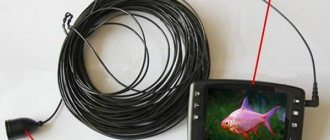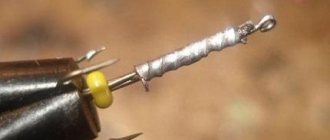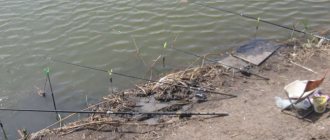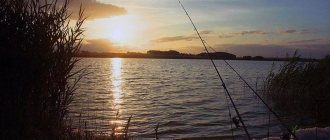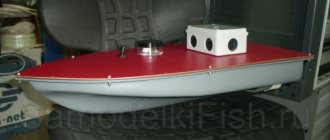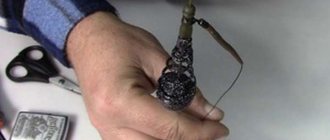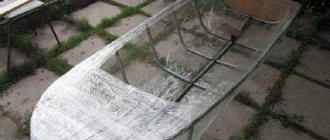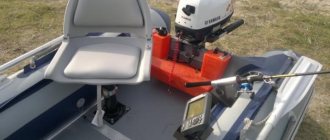What is makukha
Makha is a cake from the seeds of plants that produce oil through pressing. This is a concentrated feed for agricultural animals. It contains a large amount of protein. Sunflower seed cake is mainly used for fish feeding.
P roshe is waste from the production of vegetable oil. Kolob performs the function of complementary feeding - bait. Basically it is made in the shape of a circle. You need to choose a place for feeding, throw the circle and forget for a week.
If the kolob is used as an attachment, then in most cases it will look like a square piece. Hooks are stuck into it - dowel hooks, or there may be several rectangles of different sizes on a hair rig. Large fish love this bait, especially carp and crucian carp.
If you want to catch bream, then you need to use three circles in a suitable place, and you will be pleased with the catch.
Overview of species
There are quite a few types of maca, depending on the plant seeds, the cake is distinguished:
sunflower;
Sunflower seeds pressed into briquettes are one of the best types of waste. Sunflower fluff is a bait that “works” better when catching almost every type of fish. In general, waste from oil compression is an excellent protein feed; it is actively used in the agro-industrial sector.
If flour from soybeans and rapeseed is not produced technologically correctly, when it gets into the water it releases toxins and becomes dangerous. The same will happen if the storage conditions for this waste are violated. So it's not worth the risk.
It is better to use proven sunflower seed, which is available in circles, tablets, bars, and pressed beans. Experienced fishermen advise inspecting the sides of such products: one side should be smooth and the other rough.
As a rule, the thickness of such forms is at least 30 millimeters. It is easy to work with such forms - the top is perfectly divided into the necessary pieces for attachment. Ready-made bars can be natural or already flavored.
Natural
Natural pieces of corn do not have any foreign odor; they have the characteristic color of the waste from the production of those seeds that have been processed. Available in various shapes, including those with a hole through the middle.
You can prepare such a natural mahogany briquette at home:
- You need to lightly fry the sunflower seeds;
- pass them through a meat grinder (the volume will be reduced by a third);
- compact the cake into the press mold and tighten the screw as much as possible;
- heat the surface of the mold until oil flows out of the holes;
- tighten the screw again;
- if you need a loose base, you can immediately remove the cake, but to obtain a pressed cake, leave it still in the mold, periodically tightening the press.
The natural ingredient can be both bait and groundbait. In the first case, the hook is disguised in a piece of cotton wool and thrown into the water. This principle is suitable for equipment in the form of a makushchatnik. Store such a briquette open in a dark place.
Flavored
But the flavored bars are hermetically packaged so that the smell that was used to flavor the top does not disappear. Add aroma to further attract fish. This complementary food is then mixed with various cereals and made into a fragrant bait.
At home, flavored seed oil can be prepared using the method described above, only by adding the appropriate aroma at the stage of completing the roasting of the seeds.
Since sunflower already has a fairly strong odor, the cake needs to be flavored with even stronger aromas. Store-bought flavors with a dose of “chemistry” are better suited for this. But which scent to choose depends on the time of year and the preferences of the fish you plan to hunt.
A freshly prepared briquette with an aroma will lure fish to the fishing site; it is more often used as complementary food. This kind of cake can be made more loose, and to get this texture, you need to grind the seed as finely as possible and not turn the screw on the press so hard.
What does makha consist of?
Makukha is made from oil cake from oilseed crops. The overwhelming majority use sunflower cake; less often it can be found from other materials.
Cake composition:
- Water up to 10%.
- Protein 30-40%.
- Oil up to 9.5%
- Fiber 5%.
Let's consider the existing types of makukha:
- From sunflower. This is the most common species and is widely used in fishing. It has an aromatic smell and pleasant taste. This is necessary to get good equipment.
- Made from linen. It costs more than sunflower kolob, which is why it is not in great demand. The cooking method is quite difficult. It is required to comply with all rules and technology during production. If something is violated, it will affect the quality of the product.
- From soy. This product can be found quite rarely when used for agricultural purposes and in fishing. If production is not carried out according to standards, then the likelihood that the cake contains harmful substances increases. Because of this, such a kolob cannot be used. But there is also a plus for this cake. This is a high protein content, which has a beneficial effect on the value.
There are several other varieties of makukha, but they are generally not used for fishing. This can be mustard, corn, or peanut cakes.
Cake is an excellent bait for fish of various species. The highlight of this method is that it catches large fish. The cake dissolves in water and attracts fish.
What kind of fish can you catch on top?
In the overwhelming majority, large fish are caught with such a bait. Such as carp, crucian carp, tench and bream. But you can catch a variety of fish, which will mostly be above average in size.
When using cake, the catch increases and fishing becomes more interesting. When there is a fight with big fish, it is always a pleasure.
Time and place of fishing
You can catch carp with cake only in the summer months, when the fish becomes sedentary, occupying certain areas of the reservoir, fattening up for the winter. July and August are the most promising fishing season.
Important! Carp anglers have noticed that the best results are obtained by organizing fishing in the dark during abnormally hot weather during the daytime. During this period, the carp switches to night feeding, starting to actively collect food with the onset of the first twilight, coming quite close to the coastline.
To install the installations, select clean and flat bottom foundations from hard soils, without vegetation and snags. Optimal hunting depths are from one and a half to three meters. On the currents, they look for quiet backwaters and fish within the boundaries of mixing streams. In such places, odors spread faster from the bait, and the fish finds the setting in a shorter period of time.
The principle of “work” of the bait
Fishing with a cake is not difficult, but the principle differs from other bottom gear. The main difference is that zhmak is used not only as bait, but also as bait. When it gets into a body of water, the kolob swells and falls apart. The hooks that are mounted in it crumble and are hidden in the top, swollen at the bottom. The fish eats the bait and swallows the hook.
It is recommended to use pulp cakes with bells. They are mounted on a fishing line, and you also need to cut the zhmak in advance. One cube of cake must be larger than the size of the lead plate. After casting, you will need to tighten the line and attach the bell, it will notify you that a bite has appeared.
The friction of the reel must be weakened to the maximum, since during a bite the slave will be able to drag the fishing rod along with him. This will also reduce the jerk that can lead to broken line.
Advantages and disadvantages of using makukha
Advantages:
- Attracts fish.
- Quickly dissolves in water.
- Easy to make yourself.
- Low price when purchased in a specialized store.
- Can be used in still and flowing water.
- Has a rich aroma.
- Easy to use.
- Long-term storage.
Disadvantages: when the cake gets wet, the hooks are exposed, there is a chance that the fish will notice them.
Methods for preparing makukha at home
It is possible to prepare bait from cake at home. To do this, you will need to prepare everything you need to make makukha.
Ingredients:
- Seeds. They should be black and not fried, but raw.
- Meat grinder, coffee grinder or mortar. This will be required in order to prepare the cake itself.
- Weight for the press, it is advisable to make a mold.
Manufacturing process
1 way:
- You need to take the seeds and fry them until half cooked. This is done to obtain a pleasant aroma.
- The resulting seeds will need to be passed through a meat grinder until the consistency of the powder is obtained.
- Simply place the resulting porridge on a baking sheet and press down with a weight.
- Place all this in the oven and bake.
- As soon as the topping is ready, you need to remove it from the oven. If you used a baking sheet, you will need to cut the top into the desired pieces.
Method 2:
- Fry the seeds until half cooked.
- Pass it through a meat grinder.
- We compact the resulting seeds into the mold so that the final result is the finished ingredient. The volume will decrease three times.
- We place the mold under the press and tighten the press screw with great force.
- Heat over the entire surface of the mold. This must be done until oil appears through the holes.
- Tighten the screw again.
- You should not remove the product immediately, otherwise it will disintegrate or swell.
- After 25 minutes, you can remove the top from the mold.
- While the cooling process is underway, you can tighten the screw on the press several more times.
Do-it-yourself makukha
Prepare makukha for fishing with your own hands at home. There are several recipes for preparing bait; they differ only in the ability to use certain equipment.
Pea flour
Pea powder is the main bait for catching carp. To prepare it you will need:
- 100 g peas.
- 50 g semolina porridge.
- Raw chicken egg.
- Corn oil.
- Honey.
- It is necessary to grind the peas in a blender.
- Add semolina and mix.
- In another bowl, add the egg and 1 tbsp. l. corn oil and honey.
- Later, transfer everything into one bowl and mix until smooth.
- Roll boilies from this dough to the required size and boil them in salted water. After the boilies float up, wait another minute.
- Next you should dry the boilies.
Before using it for fishing, you need to add butter to the boilie bag. Carp will love this scent.
Recipe from "Mikhalych"
To prepare you will need the following:
- Jack.
- Glass with piston.
- Metal plate.
- Sunflower seeds - 30%.
- Bird food - 30%.
- Peas - 15%.
- Crackers - 15%.
- Nuts - 10%.
- Some popcorn.
- Grind all ingredients in a blender.
- Pour them into a glass and press down with a piston.
- Place a metal strip on top and clamp it with a jack.
- Pump the jack up to strength and leave for 4 hours.
- Place the finished briquettes in the air and dry for about a week.
Preparing a briquette is a labor-intensive process that takes 3-4 hours. When pressed with a jack, very hard briquettes are obtained that take longer to dissolve in water.
Seed dust
- Sunflower seeds are lightly toasted.
- Then they need to be crushed with a knife, blender, mortar or any convenient method.
- Metal molds are filled with crushed seeds.
- Using a masher or a press, you need to press the resulting porridge into the mold as hard as possible.
- During all manipulations, the mold should be heated.
- You should not immediately remove the porridge from the mold, otherwise it will begin to disintegrate. It's worth waiting for it to cool down.
- Cooking takes about 1 hour.
- After cooking, makukha should be stored in jars with pressed oil.
- The molds must have removable bottoms to easily remove the briquettes.
- It is not recommended to prepare briquettes long before use, otherwise they will lose their natural smell.
- Makukha should be stored in jars with the lid closed.
- The oil that remains after cooking is perfect for bait.
Types of makushchat equipment
This type of equipment has a primitive appearance. A piece of kolob is attached to the load. It is better to place several hooks with short leashes at the ends of the tackle. Thanks to this length, the carp will spit out the hook through the gills, and the hook will occur.
Basically, hooks are stuck into the kolob. You can use additional hook baits such as corn, worm, pea and others. Nothing was supposed to be in its original form, because the hook simply cut into a piece of the top of the tree.
There are a number of types of making makushatnik. All types involve working on the “hickey” principle. This principle is based on the fact that the fish will mistake the meal for garbage and eat it, and then send it out through the gills. Thanks to this, notching occurs.
The makushatnik is divided into equipment with a fixed and sliding load
With fixed load:
- The weight is made of lead and is shaped like a horseshoe. The zipper is attached with a loop that tightens itself. It is passed through a hole made in the cake. The hook is secured using a leash material that has a fastener. This type is very easy to use. It is quite easy to replace or add a hook.
- The lead weight is made in the shape of a heart. It is attached using a loop that tightens itself. It is threaded into the hole in the cake, which has the shape of a cylinder. The leash is attached using any knot and the fastener is not used. In such equipment, it takes quite a lot of time to replace or install an additional hook. To do this, it is necessary to make a cut across in order to tighten the fastener loop. This tackle should not be used in bodies of water with strong currents.
- One of the popular rigging methods. This is a piece of lead shaped like a square, which has sides. Thanks to this design, the crown is protected from breakage when it collides with various obstacles located at the bottom of the reservoir. Because of this shape, water planning is carried out; when lifting occurs, the load will not be buried in the silt, but will rise. The clamp is mounted using a loop that tightens itself and a rubber ring. The hooks are located in a hole that is drilled on the top of the head.
- Combined tackle. In addition, it assumes a load in the form of a ring with a feeder for soft bait. This type of design allows, more precisely, to deliver fertilizer to the required place.
With sliding weight:
- This is a rectangular weight with holes in each side. The weight of the cargo must be between 30 and 150 grams.
- The swivel and latch are attached using one of the holes.
- A leash with a hook is attached to the holes that remain. It is necessary to monitor the length of the leash; it should not exceed seven centimeters.
- The crown is secured with an elastic band or screw. It must be screwed into the load, and a zipper must be put on top.
Making your own makukha for fishing
In order to independently adapt to fly fishing, you should stock up on the following accessories:
- Sinker. It is best to resort to a flat view.
- A high quality fishing rod, the length of which reaches 3-4 meters.
- Durable reel. Inertialess is best suited.
- Fishing thread with a length of at least 100 meters and a thickness of no more than 0.35 mm.
- Different types of hooks.
- Leashes of small length and thickness.
Such devices will make fishing with maku even more productive. It’s better to stock up on several options for accessories for better bite.
Before you start fishing for makukha, it is worth remembering some nuances for its manufacture:
- The ideal shape is cuboid or parallelepiped.
- The size should be between 40 and 60 mm.
- It is recommended not to break off the pieces of bait themselves, but to saw them off. Now you can find ready-made options on sale.
If you comply with all these requirements, then you can build a makukha no worse than the store-bought version. In addition to the above requirements, there is also a certain list of materials and tools.
Some of the ingredients and supplies you may need include:
- unroasted sunflower seeds;
- blender for grinding;
- molds with holes made for oil to drain;
- compaction press;
- container for cooking.
If you have all the equipment, then you can begin the process of preparing makukha. If you don’t have something, you can replace it with a similar means at hand. The manufacturing process consists of several main stages:
- The seeds should initially be lightly fried until 50-60 percent cooked, after which they should be crushed using any method convenient for you. Here you can resort to using a coffee grinder or mortar, blender or hammer.
- The form should be filled very tightly with the resulting mass. Here you should use a press that will compact the contents as much as possible.
- In order for the oil to completely disappear from the mold, it should be heated in a container when filling. Meanwhile, the liquid will flow out, and the cake will take on a glued shape. Usually this procedure takes no more than 40-45 minutes.
- The resulting bait should be removed when it has cooled down.
- Makukha is stored in dense containers for no more than 4 days. That is why makukha for fishing should be prepared with your own hands only before the process itself. If this rule is neglected, then the efforts may simply be in vain.
After production, the piece should be completely stuck together with no reason for it to fall apart. When this stage is completed, you can begin making bait at home.
Mounting equipment
In order to make your own makushatnik, you need to stock up on some materials:
- The rod or fishing line must be stiff. Its diameter should be within 0.3 mm, and its length should be up to 150 m. For correct casting, it is necessary to install a chic leader at the end of the line. This is a piece of fishing line with a large diameter of 0.5 mm and a length of up to 8 m. This will prevent the fishing line from breaking. The rod can be used of any hardness if the sinker is less than 100 grams and its length is up to 3 meters.
- Durable, inertia-free reel. It has a light stroke that is evenly distributed. This is achieved by using good bearings. Because of this, the line is laid evenly. There are no overlaps or tangles when casting. The coils have two levels of regulation. This allows you to absorb the jerk of the fish, which will prevent the leash from breaking.
- Monofilament fishing line with a diameter of about 0.5 mm and a length of at least 100 m.
- The flat sinker must be at least 3*3 in size.
- The leash must be made of braid with a diameter of 0.35 cm and a length of no more than 7 cm.
- Hooks needed around #7
The main disadvantages of wooden oil presses:
- low performance. On average, 1-3 liters per hour, which means even with a 12-hour working day you can’t get more than 36 liters of oil
- low oil yield - about 20% of the weight of the seed
- rancidity, drying and fungus. When the cash press is idle, it must be cleaned and treated with beeswax. If this is not done, then the oil remaining on the surface of the wood will dry out, go rancid, and the new smell will no longer be eradicated from the old barrel. If the press is not dried, then mold may grow on wooden surfaces, which also will not make the oil useful and environmentally friendly.
- High cost or low quality oil. If the equipment is used regularly, without downtime and is cleaned and dried in a timely manner, then problems with its damage can be avoided, but who can vouch for an unknown manufacturer, especially when every preventive maintenance means equipment downtime, a waste of time, and therefore an increase in cost.
Screw oil presses are more technologically advanced and can operate in continuous mode for a long time. They also require cleaning, but metal is easier to clean than wood. However, screw presses have no fewer pitfalls than wooden ones.
The process of making a makushatnik with your own hands
In order to make a makushatnik with your own hands you will not need a lot of time and energy expenditure:
- We take a fishing line, its diameter should be 0.4 mm and its length 50 cm, and fold it in half. The end must be tied with a simple knot.
- It is necessary to put a weight on the resulting loop.
- You need to put a small piece of insulation from the wire on the fishing line. Its length should be no more than 25 mm. It is necessary to make a loop and tighten it with a self-tightening knot. A piece of cake will be attached at this place. The insulation must be inside the loop because the double leash will be attached to it.
- At the other end of the fishing line you need to tie a strong swivel. It should prevent the line from twisting. This makes it easier to quickly replace gear if the need arises.
- We attach a double leash to a piece of insulation. Insulation is required to improve the design when you are trying to get a fish out of a reservoir without the leader fraying or the line being burned.
- Using a knife, make two longitudinal cuts on the kolob. They shouldn't be very deep.
- In a loop made of fishing line, use a self-tightening knot to place the cake.
- We deepen the hooks into the edges of the cake; it is necessary to ensure that they do not get tangled when casting the fishing rod.
If you need to make a makushka with a sliding sinker, then its process is slightly different:
- A stopper must be attached to the main line.
- The end of the fishing line, which is free, must be threaded with a loop into the hole located in the top of the bar and secured with a clip.
- The loop of the main line serves as the attachment of the leash and hook.
- Hooks and leashes must be hidden in the slots in the corners of the kolob.
All materials used to equip the makukha must match the color. If they are radically different, then the fish may sense a catch. They shouldn't smell like anything.
Top fishing technique
- Before throwing the equipment, you need to release the friction brake and turn on the baitrunner.
- After 30 minutes, after the zhmak gets into the reservoir, it will become soggy that the fish will be able to peck at it. During this time, the smell that she gives off spreads over a long distance. Usually the fish approaches the bait with uncertainty and wariness.
- At such a moment, you cannot touch the rod and make various sounds. The fish approaches the top of the head and begins to suck it in the place that it likes, mainly the corner. There is a hook right there, but the fish cannot distinguish it.
- You will see the beginning of the bite thanks to the soft and long rod. Its thin tip will begin to tilt slightly. As soon as similar fluctuations begin, you need to prepare for hooking.
- Usually 10 seconds pass and the reel clutch is activated. This means that the fish has swallowed the hook and is trying to escape. At this moment you need to make a hook.
- Do not make sudden movements while hooking. The fish can swallow the hook of one of the lips, and with a sudden movement there is a possibility that you will tear it off.
